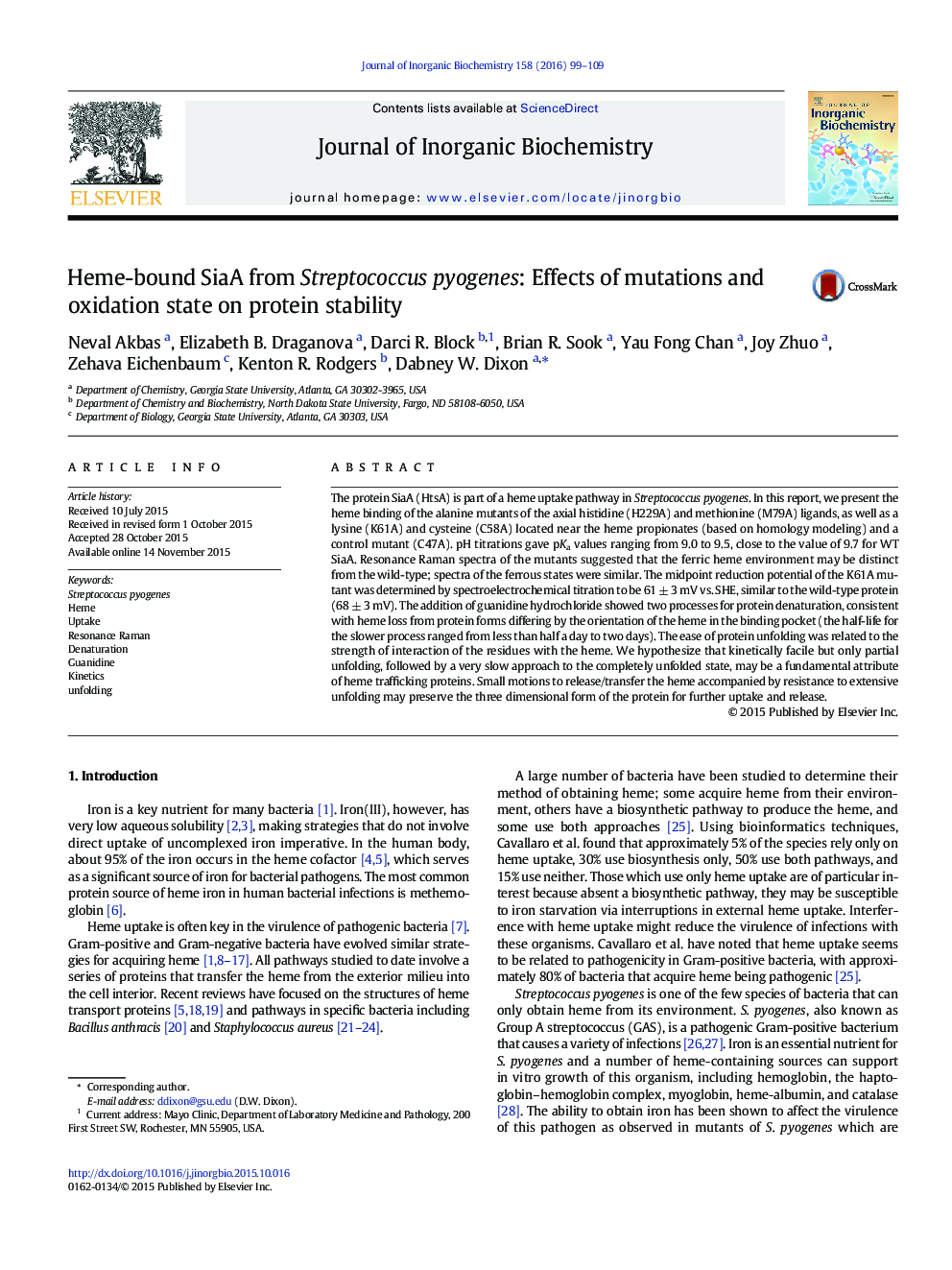| Article ID | Journal | Published Year | Pages | File Type |
|---|---|---|---|---|
| 1316843 | Journal of Inorganic Biochemistry | 2016 | 11 Pages |
•Residues near the heme have significant effects on heme binding.•The SiaA protein unfolds very slowly over time.•Slow unfolding may be an intrinsic characteristic of proteins in heme uptake pathways.•SiaA has little thermodynamic preference for folding around ferric over ferrous heme.
The protein SiaA (HtsA) is part of a heme uptake pathway in Streptococcus pyogenes. In this report, we present the heme binding of the alanine mutants of the axial histidine (H229A) and methionine (M79A) ligands, as well as a lysine (K61A) and cysteine (C58A) located near the heme propionates (based on homology modeling) and a control mutant (C47A). pH titrations gave pKa values ranging from 9.0 to 9.5, close to the value of 9.7 for WT SiaA. Resonance Raman spectra of the mutants suggested that the ferric heme environment may be distinct from the wild-type; spectra of the ferrous states were similar. The midpoint reduction potential of the K61A mutant was determined by spectroelectrochemical titration to be 61 ± 3 mV vs. SHE, similar to the wild-type protein (68 ± 3 mV). The addition of guanidine hydrochloride showed two processes for protein denaturation, consistent with heme loss from protein forms differing by the orientation of the heme in the binding pocket (the half-life for the slower process ranged from less than half a day to two days). The ease of protein unfolding was related to the strength of interaction of the residues with the heme. We hypothesize that kinetically facile but only partial unfolding, followed by a very slow approach to the completely unfolded state, may be a fundamental attribute of heme trafficking proteins. Small motions to release/transfer the heme accompanied by resistance to extensive unfolding may preserve the three dimensional form of the protein for further uptake and release.
Graphical abstractSiaA is the lipoprotein component of an ABC transporter in Streptococcus pyogenes, playing an important role in heme uptake. The axial ligands and residues close to the heme propionates have a significant effect on heme release.Figure optionsDownload full-size imageDownload as PowerPoint slide
